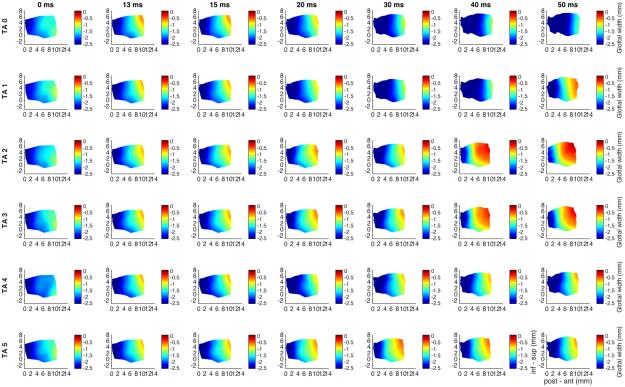Fig. 6.
Glottal shape for the interaction between maximal PCA activation and graded TA activation. Design layout is same as Fig.1 except now PCA is held at maximum stimulation for all rows (grade 6), while TA is added in a graded fashion from grade 0 (‘TA 0’, row 1) to grade 5 (‘TA 5’, row 6). PCA abducts the mid vocal fold by 75%, lengthens it by 5% and maintains near baseline to subtle increase in vertical height thickness. Mid-level TA activation (grade 2-3) results in 45-60% adduction, near completely reversing the abductory effects of PCA. Higher-level TA activation (grade 4-5) fails to reverse the abductory effects of the PCA suggesting a priority for vocal fold abduction or airway patency with high level laryngeal neuromuscular stimulation. (inf – sup = inferior to superior, ms = millisecond, PCA = posterior cricoarytenoid, post – ant = posterior to anterior, TA = thyroarytenoid).

